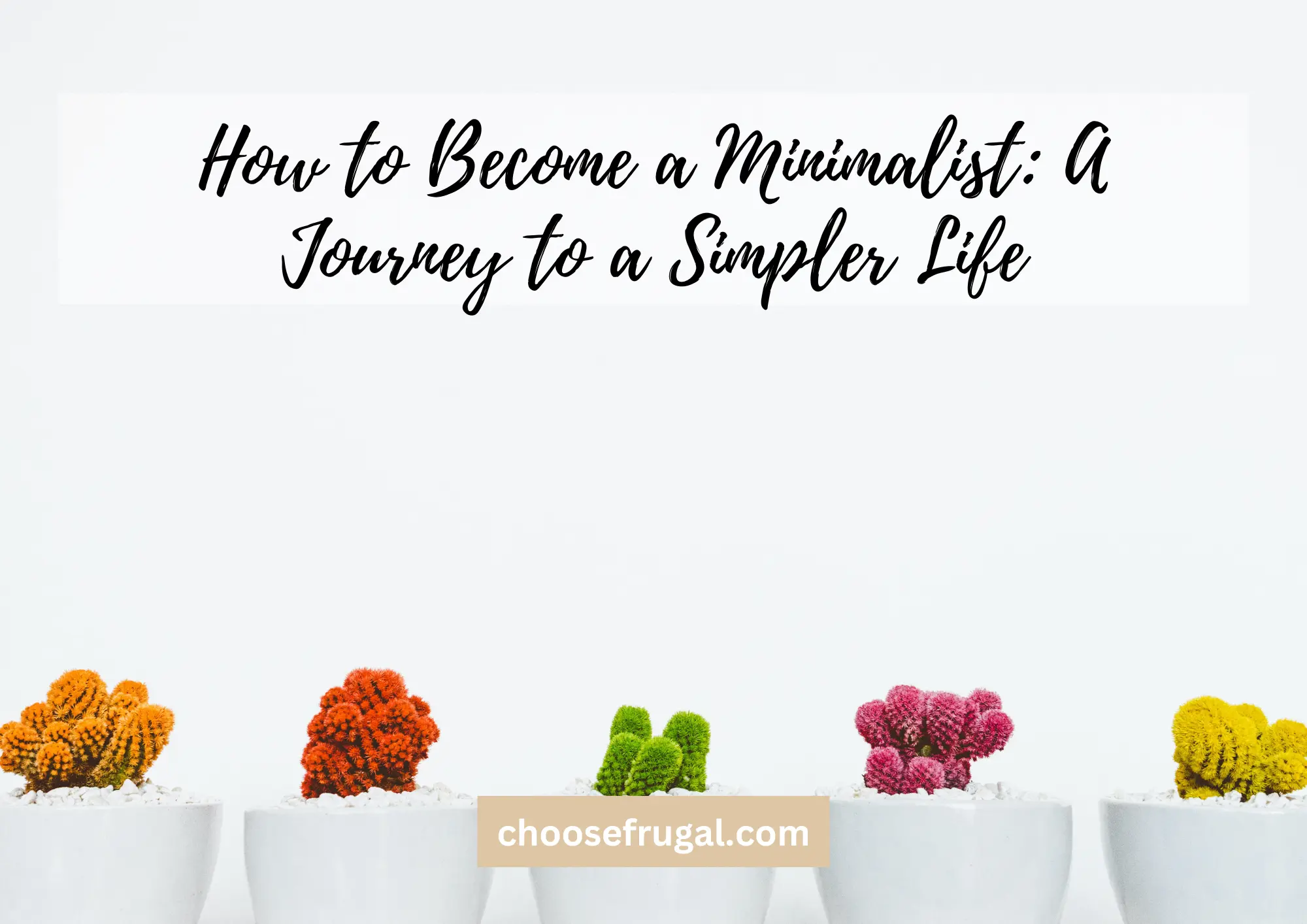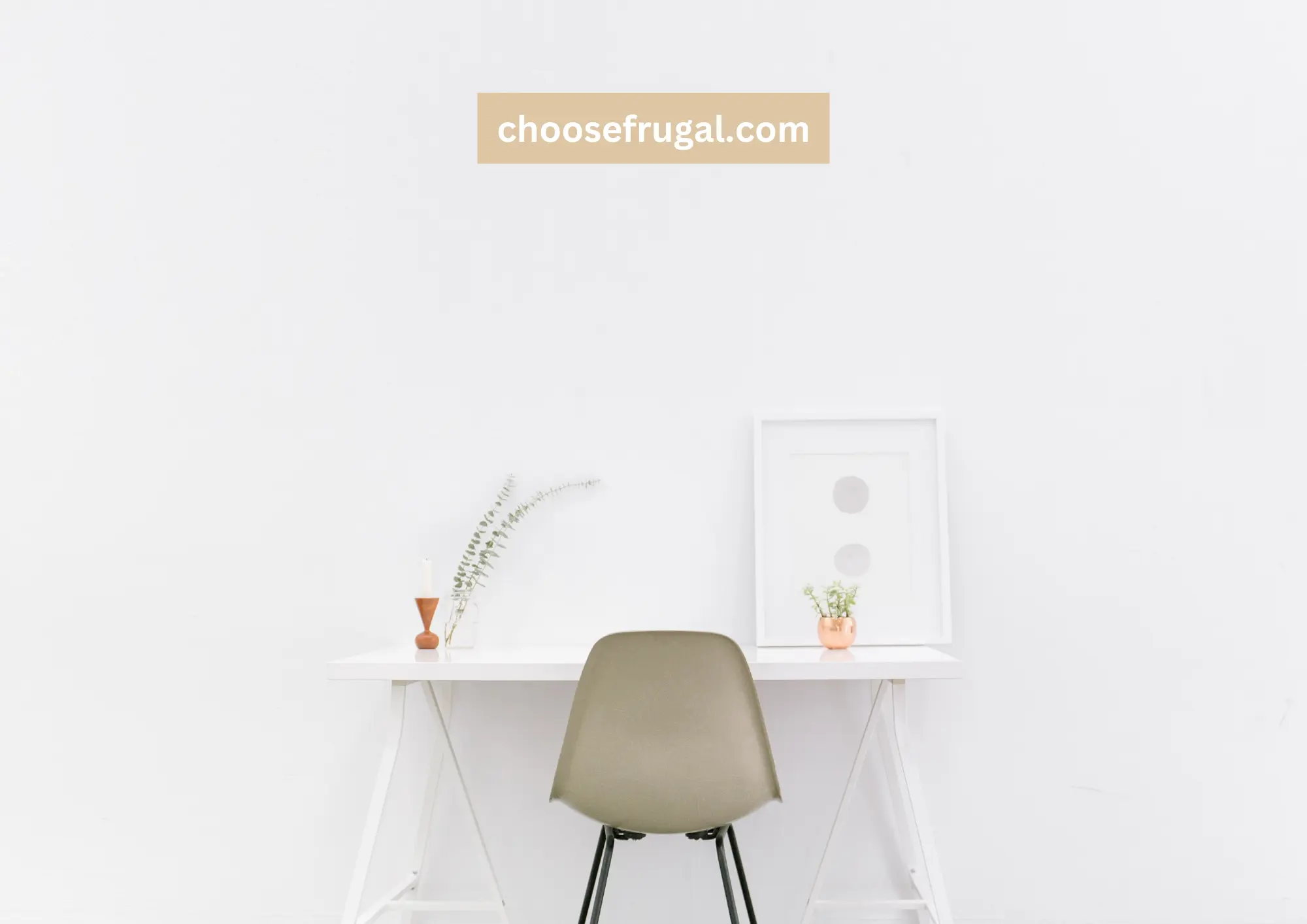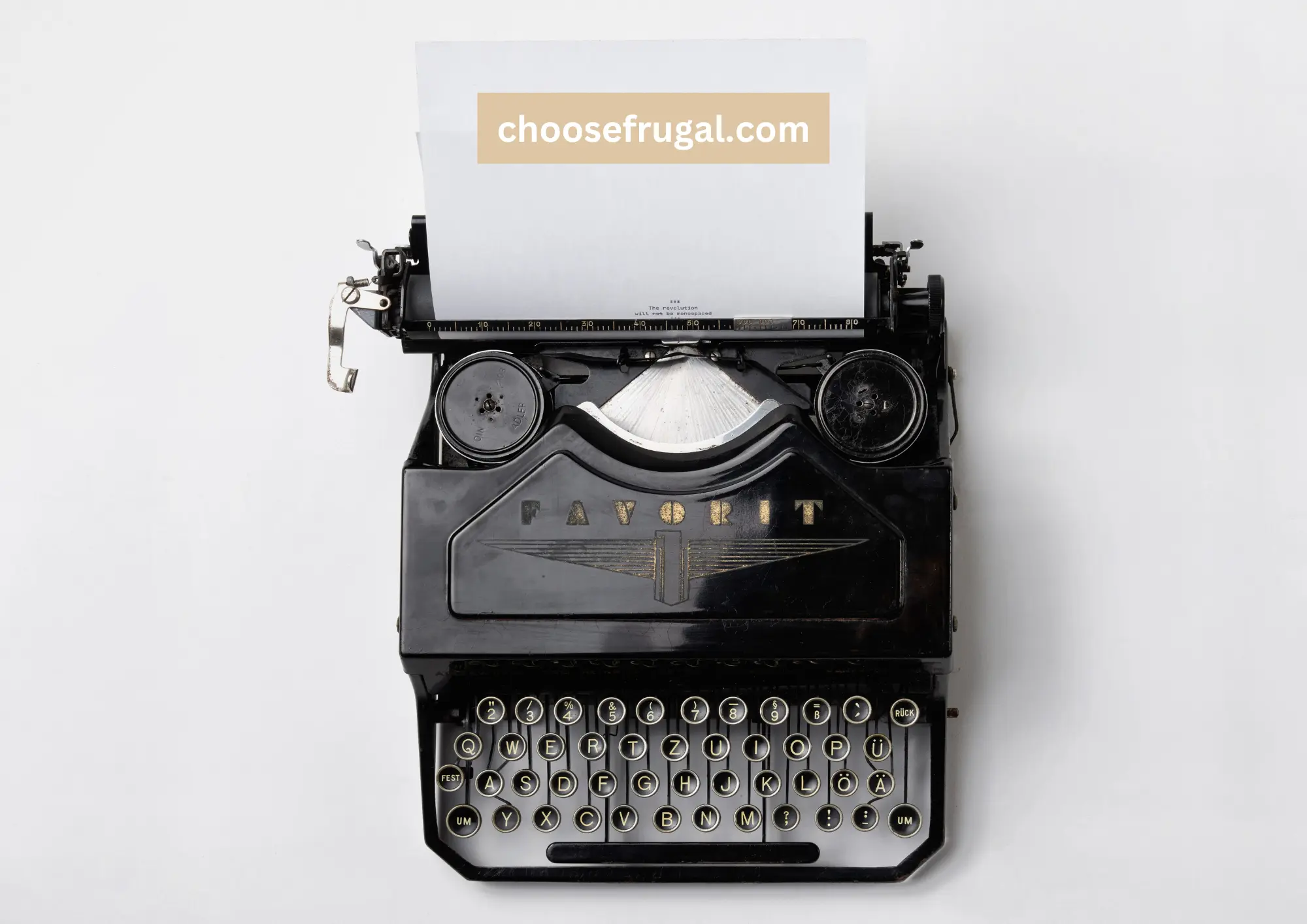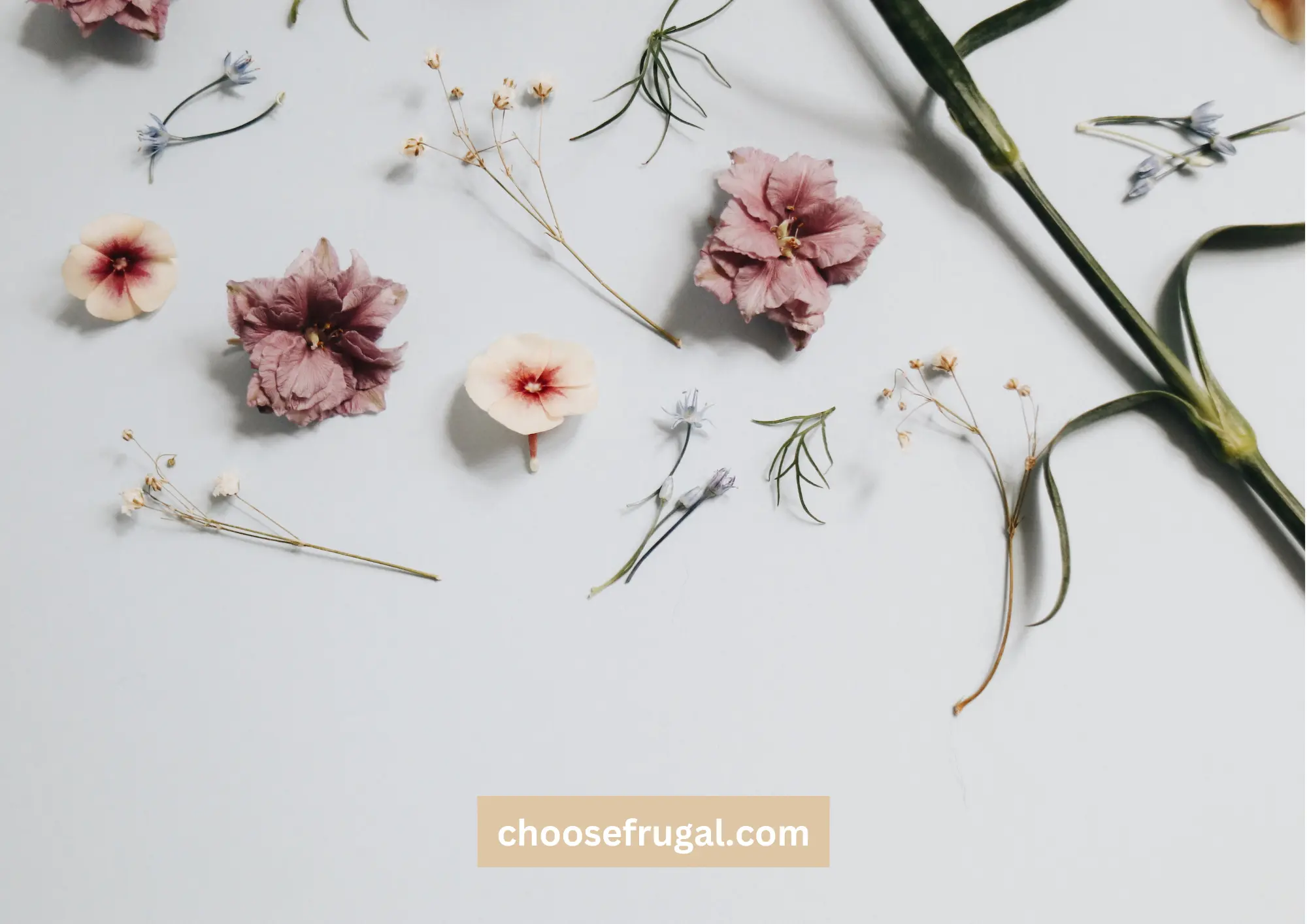Are you curious about embracing a minimalist lifestyle?

In our modern lives, we are constantly overwhelmed with obligations, relationships, purchases, possessions, and clutter, both physically and mentally. The noise, external clutter, and chaos around us put our minds and bodies in a continuous state of stress and overdrive.
It’s time to make a change and start living again. By adopting a minimalist lifestyle, you can transition from a hectic life to a calmer, more focused one. This guide will provide you with tips and strategies to help you on your journey toward simpler minimalist living and a more peaceful existence.
It’s essential to remember that minimalism is not about extreme self-deprivation – it’s not about denying yourself the things that bring you happiness. Instead, minimalism focuses on self-control and a way of living that doesn’t rely on material possessions for satisfaction. So you might be wondering how to become a minimalist. Read on for a comprehensive guide on how to become a minimalist.
This “only keep what you need” philosophy extends beyond decluttering your home (although that’s an ongoing process and an excellent place to start). It can also encompass your career, wardrobe, belongings, digital presence, relationships, and finances. Minimalism enables you to concentrate on the most crucial aspects of your life.
Advantages of a Minimalist Lifestyle

When you commit to a minimalist lifestyle, there will be an adjustment period as you begin to let go of unnecessary things and habits. However, once you settle into and love your new way of living, you’ll experience increased happiness, peace of mind, and self-confidence. You’ll feel lighter and freer to pursue your passions without being weighed down by unneeded “stuff.” Minimalist living also helps you save money by buying and spending less.
By letting go of physical clutter, you’ll create more open space in your home, mind, heart, and life. This newfound space allows you to dedicate more time to activities and relationships with family members and friends, that genuinely matter to you.
Getting Started with Your Minimalism Journey

Becoming a minimalist is not an overnight transformation. It’s an ongoing journey, filled with self-compassion, occasional setbacks, and steady progress.
Here are some steps to start addressing the stressors in your life:
Define your vision to become a minimalist: Why, how, and what

Before diving into simplifying your life, take some time to reflect on your motivations. Are you seeking better health, reduced stress, or improved control over your surroundings, daily habits, thoughts, and feelings? Do you want to have less stress to alleviate the emotionally exhausted feeling that comes from trying to juggle too many tasks at once?
If you take the time to sit on the corner of your bed and contemplate the things that you truly value in life, the things that offer you meaning and fulfillment you’ll come to realize that there are but a few reasons why you want to live, why you get up in the morning and why you keep pushing on. Focus on those and start to think what those reasons are, really take the time to consider them and appreciate them.
Identify the sources of stress in your life and brainstorm ways to minimize them. Would you like to declutter both physically, mentally, and emotionally? Set achievable goals and display your list somewhere visible, reviewing it daily. Some people prefer to create vision boards that showcase their aspirations for a minimalist lifestyle.
Write down why you want to simplify your life and become a minimalist

Tell me the most important reason that you wish for life to be simpler. Write them down. Are you mad at having kids? Trying to get rid of debt collectors? Take note. Does the constant overwhelm and tiredness makes you sleepy and depressed? Are you considering firing a manager?
Yes, please note this. This list of reasons can give you great leverage if you feel like you’re struggling. How do you understand why? How can you make your lifestyle simple for yourself and others? There are still a few minutes of contemplation and internal discussion to take place.
Change your mindset to become a minimalist

Adopting a minimalist mindset requires time and effort, and you need to realize you may occasionally revert to old thought patterns. However, over time, simplifying your life will become a natural part of your daily routine.
Focus on what truly matters to you. This might be your loved ones, a specific hobby, or a skill you’ve always wanted to develop. By zeroing in on your priorities, and more internal stuff like drivers, you’ll find it easier to let go of less important things.
Embrace the rewards of a simpler life. Life inevitably presents challenges, but maintaining a focus on your priorities and cultivating gratitude can make these difficulties more manageable and bearable, allowing you more room to fully appreciate the present moment.
Manage your expectations

Society often pressures us to chase after countless desires, which can lead to stress and dissatisfaction. By adopting a minimalist perspective, you may discover you can reduce your wants to a manageable level, keeping your priorities in mind. This shift in expectations can help alleviate and reduce stress, and cultivate a more contented state of mind.
Create a plan for decluttering

One of the most significant aspects of the minimalism journey is letting go of physical possessions that no longer serve you. Develop a plan to declutter your living space, beginning with the most challenging areas. Break this task into smaller, manageable projects, and tackle them one at a time.
While you declutter physical items, your mind may start to wander, which means it’s time to start decluttering your mind and heart. Get rid of those mental and emotional blocks.
Declutter your wardrobe
Get rid of everything from every possible place – clothes, backpack, etc. Divide into categories and begin clearing them out. Make the piles – Keep, Get rid of, and possibly keep. Get rid of clothing you don’t like. When something is broken or deteriorating you should just remove it. Ask yourself this question: Am I really going to wear that again? Set up “maybe boxes” to keep all your possibly unwanted goods until you reach a final decision.
Discard the duplicates and broken items you never use

Take a look inside your house and insert copies in the box. If there are two sets, put one in the box. Is there a copy of similar books? Give them a box. What about multiple sets of sheets for the bed? Think of only the items and numbers of things you want, or need, to be more exact. Place the boxes on the dining room table so they are spread out and you can easily sort the items.
When filling up your box label it “Duplicates” and put it in an unattended place for a week. Once you’ve decided what to get rid of, make some phone calls and find out where you can donate these items. Donations will help people find a solution to a problem that is caused by something that is not in their possession.
Take out the items on the counters for extra storage. There could also be duplicate copies on the shelves. It may be a part of your life that you wish to have multiple things. But most people will realize that there is no point in having duplicates, especially of items such as books. The journey to a clutter-free bookshelf and any closet or area starts with sorting and decluttering. You could donate your duplicate books and old magazines to schools or the local library.
Track your progress
Keep a journal to document your minimalist living journey, noting the changes in your mindset, habits, diet, and environment. This will help you see your progress and maintain motivation. As you make progress toward a clutter-free life, you’ll realize that you live in abundance and that the only things you’ll start to want are the things you need.
10 Minimalist Lifestyle Tips to De-Stress and Save Money
Reduce costs and improve the efficiency of your spending by minimalism, as it has become increasingly common. If you want to live like a minimalist you should always strive to only use items with an intended purpose. It involves living simply and focusing on only what is needed in your daily life.
Occasionally, some people will take on no-spend challenges or leave their homes only when needed. Not only will minimalism help with saving money, but you’ll also be more effective at cleaning and organizing yourself. It’s a constant practice to practice minimalism. There are many ways to improve your minimalism. Start by reviewing the small things that are useful in your life and those that are unnecessary.
1) Implementing Minimalism at Home
Decluttering your home is a vital step in embracing minimalism. Here are some strategies for simplifying your living space:
2) The KonMari Method

Marie Kondo, a Japanese organizing consultant, developed the KonMari Method to help people declutter their homes and their lives. The technique involves gathering all your belongings, category by category, and then touching each item to determine whether it “sparks joy.” If it doesn’t, thank the item for its service and let it go.
3) Simplify personal care
This includes makeup, perfumes, hair products, makeup, nail polishes, hair clips, etc. When removing branded items, imagine you’d travel to someplace and you can only pack a handful of items. I use a few personal items that I really need. My cupboard also holds all the other things, which aren’t used regularly. Imagine it. It might be helpful. If you want, you can donate some of the things that aren’t used, donate any unused items.
4) The 30-Day Minimalism Game
Created by The Minimalists, the 30-Day Minimalism Game is a challenge to help you declutter. On day one, you get rid of one item; on day two, two items; and so on. By the end of the challenge, you will have removed 465 items from the physical space of your home.
5) The 12-12-12 Challenge
This decluttering technique involves finding 12 items to throw away, 12 items to donate, and 12 items to be returned to their proper place. Completing this challenge can help you eliminate 24 items from your home and return 12 things to their correct place in a single day.
6) The Four-Box Method
Using this strategy, you’ll need four boxes labeled “trash,” “give away,” “keep,” and “relocate.” Go through each room and area of your home and place each item into one of the four boxes. This method ensures that every item in your home is evaluated and assigned a proper place or destination.
7) The One-In, One-Out Rule
To maintain your minimalist lifestyle, adopt the concept of the one-in, one-out rule. Whenever you bring a new item into your home, you must let go of a similar item. This practice helps prevent waste and the accumulation of unnecessary belongings and less clutter everywhere.
8) What is the 30-day rule minimalist?
This rule is meant to keep you out of unnecessary purchases. When I see something I want that costs $30 or less, I ask myself how long I could go without it, if it’s less than 30 days I’ll buy it. So if it is $30+, I tend to wait 30 days.
9) How long does it take to become a minimalist?
Most people can transition from minimalism in just 1 year. After I embraced minimalism for a few months, I began noticing the benefits of decluttering, intentionality, and mindfulness.
10) Don’t spend any money for 24h
It’s now time for a clean-up of your life. Take it slowly and don’t spend anything for the next 24hrs. Consider adding a week-long non-spending week to the list. It helps: For “No Spend Day,” you’ll need the willpower to prepare for it. Maybe you’ve gone to a store and wanted an item for yourself, and just bought it mindlessly. Keep in mind this is your day that does not involve spending any money. To avoid spending anything, prepare food the day before, making coffee or tea at home. This will help you avoid small expenses which quickly accumulate.
Are minimalists happier?
Overall minimalist people feel happier since there is less stuff and there are fewer problems to solve. For some minimalists the material things are trivial in comparison with their highest value: quality time for relationships, free time for simple pleasure in life, and spirituality.
How many items should a minimalist own?
A minimalist should have 5-6 casual tops, shirts, and pants plus 2-5 workout tops or tanks and shorts. One top and a pair of pants for each day are a good way to develop a mindful wardrobe that emphasizes simplicity. In fact, for most individuals, one top may be sufficient for their daily needs.
My Minimalist Journey and How I Live a More Intentional Life
Although I didn’t intend any particular destination, my goal to embrace practicing minimalism was to relieve stress and create more space in my life so that I could feel happier and more present. Reduced expenses and debts, home items, and work schedules. It took a year, and dozens of tiny steps to make progress. I deliberately took time. When you’ve started out as a minimalist you should consider these little steps. The minimalist advice will aid in a wide array of aspects of your life.
In Conclusion
By embracing minimalism, you can create a more peaceful and focused life. As you do fewer things, declutter your home, and shift your mindset, you’ll find yourself with more time and more energy, to focus on the things that truly matter to you.
Also read:
Budgets for beginners: A guide to creating and sticking to one
Crafting a Practical Budget: A Comprehensive Guide to Financial Planning
18 Actionable Steps for Millennials to Build a Strong Financial Future
Why Is It Hard To Save Money? (2 reasons)
Best Wedding Reception Order of Events for Your Big Day (4 Steps to p=Planning)
9 Frugal living tips for 2022 (and Beyond)
15 Ideas For Minimalist Christmas Decorations
10 Top Tips for Planning a Wedding on a Budget You’ll Love
15 Essential Tips for a Minimalist Kitchen (Even in Compact Spaces)
The 10 Benefits of Living in a Small Minimalist Apartment on a Budget
P.S. Want to know when our next post lands and get our free ebook on how to live frugally? Then click the link below.